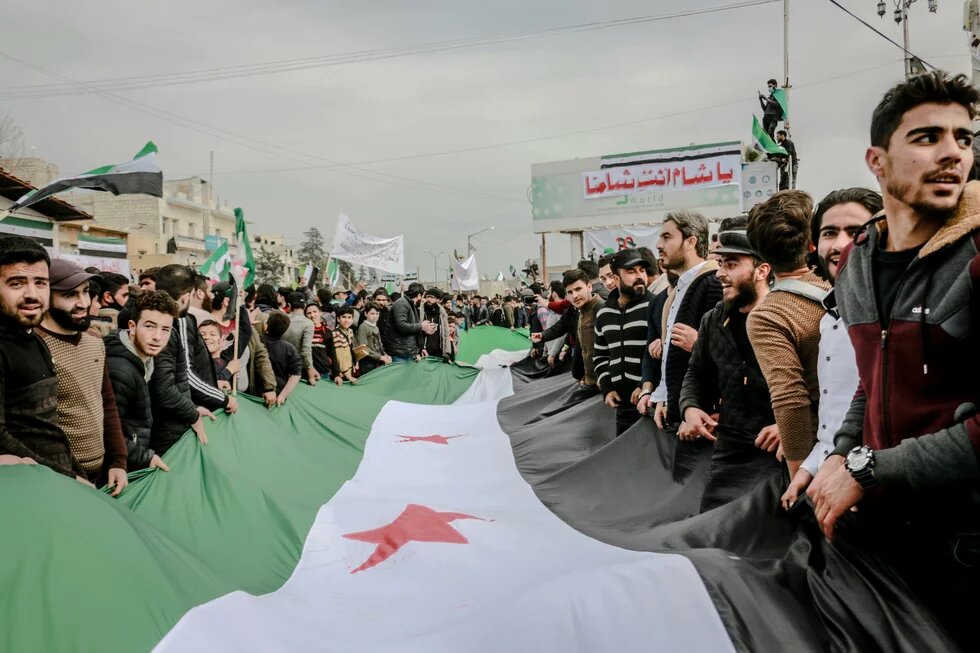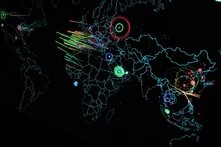The fall of Assad opened a new chapter in Syria, but rushed dialogue, stalled talks, and elite-led politics risk keeping peace out of reach. Lasting stability depends on a national dialogue that gives Syrians real ownership of their future.

The fall of the Assad regime in December 2024 marked a decisive turning point in Syria’s long and brutal war. It ended the fighting and unravelled both the political order and the UN-led peace process built around it. For more than a decade, diplomacy had centred on bringing the regime and its opposition together. With Assad gone, that framework failed to remain relevant.
For many Syrians, his ouster raised hopes that a new political horizon was finally within reach. The interim president’s early pledges of peace and stability fueled optimism, and a national dialogue was launched as the centerpiece of the transition. But instead of creating a forum where Syrians could debate the future of their state, the initiative was rushed and poorly executed. What should have been a foundation for stability instead became a hollow exercise, delivering neither legitimacy nor a credible roadmap for peace.
Lacking inclusive dialogue, the transitional authorities have struggled to rally support. Divisions have deepened, and sectarian violence has made reunification even harder. While the interim president insists that force will not be used to reunite the country, there is still no meaningful framework for peace. What exists are fragmented, stalled negotiations with local actors. Yet questions about governance, constitutional design, and power-sharing cannot be settled by elites alone. Every Syrian has a stake in this, and lasting peace demands the participation of the wider public.
The transition needs a solid foundation: a national dialogue that is inclusive, transparent, and genuinely participatory.
To break the deadlock and prevent Syria from sliding into another conflict, the transition needs a solid foundation: a national dialogue that is inclusive, transparent, and genuinely participatory. Only such a process can give Syrians real ownership of their future, provide the transition with legitimacy, and ensure that any new political system reflects the aspirations of the people, rather than the narrow interests of those in power. Without it, peace will remain elusive.
End of UN Mediation
For years, international diplomacy revolved around a UN-led process that sought to mediate Syria’s conflict by bringing the regime and opposition to the negotiating table. Despite a clear roadmap outlined in UN Security Council Resolution 2254 and numerous rounds of talks in Geneva, the process failed to deliver meaningful progress, largely because of the regime’s refusal to engage seriously.
With Assad’s ouster, the international community attempted to adapt the UN framework to the new reality, invoking the spirit of Resolution 2254 as a guide for Syria’s transition. These efforts initially drew regional and international support, as the resolution’s key milestones – an inclusive process, constitutional reform, and free elections – provided credible benchmarks for transition.
Yet interim president Ahmad al-Sharaa rejected these efforts, dismissing the resolution as irrelevant after the fall of the regime. Instead, he pledged to pursue similar steps through a domestically driven process, but without international involvement. Due to his reluctance and assurances that the transition would be inclusive, the UN-led framework gradually faded from reference, leaving Syria’s transition without a widely accepted anchor.
A Conference That Fell Short
In the months after Assad’s removal, al-Sharaa moved quickly to implement his promises. Chief among them was the launch of a National Dialogue Conference, intended to lay the groundwork for the transition. Yet its execution raised more doubts than confidence.
The preparatory committee, appointed on February 12, was dominated by figures linked to al-Sharaa’s group, Hayat Tahrir al-Sham, undermining perceptions of neutrality. Consultations held across the country were rushed, poorly structured, and top-down. Complex issues such as transitional justice, constitutional design, and institutional reform were crammed into short sessions with little space for meaningful input. Invitations often came at the last minute, further restricting participation.
The exercise looked superficial, serving more to consolidate al-Sharaa’s authority than to foster genuine dialogue.
Most troubling, the committee declared that conference results would not be binding. Recommendations would merely be forwarded to the presidency ‘for consideration,’ consolidating decision-making in one office rather than embedding it in a participatory process. Within two weeks, the entire initiative was wrapped up with a two-day conference on February 24, ending in a statement widely believed to have been drafted before the event began.
For many Syrians, the exercise looked superficial, serving more to consolidate al-Sharaa’s authority than to foster genuine dialogue. Instead of uniting communities and building legitimacy, it deepened skepticism and reinforced divisions.
From Dialogue to Negotiations
The political initiatives that followed the conference also failed to bridge the widening gap between supporters of the transitional authorities and their critics. Chief among these was the Constitutional Declaration, which was meant to be drafted through community consultation but instead amplified public concerns. The temporary constitution granted the President sweeping powers without clear checks and balances across the executive, legislative, and judicial branches. Beyond governance issues, critics argue that the document does not reflect Syria’s diverse social and political landscape.
In the absence of a national framework for reconciliation, Damascus turned to direct negotiations with areas outside its control. The most significant of these is northeast Syria, governed by the Kurdish-led Autonomous Administration and its military wing the Syrian Democratic Forces (SDF). The other is Sweida, the Druze-majority province controlled by local religious and armed factions. Despite differences in size, resources, and political structures, both regions raised similar demands in their talks with Damascus. They called for a secular, decentralized system that guarantees local autonomy in governance, security, and military affairs. The SDF, in particular, advocated a multi-ethnic federal structure with strong Kurdish self-rule in the northeast.
Negotiations stalled because of the wide gap between these demands and the centralized model the transitional government continues to insist upon. Talks were further complicated by the exclusion of these actors from military appointments, political processes, and key government posts. The authorities’ failure to protect vulnerable communities and to address episodes of sectarian violence, particularly against Alawites and Druze, only deepened mistrust toward Damascus.
Stalled Negotiations
The risks of continuing with this approach extend beyond the diminishing chances of a breakthrough or rising tensions that could drag Syria back into violence. They also lie in the fact that discussions remain confined to narrow elite circles, reproducing the exclusionary patterns of the past instead of breaking from them.
Discussions remain confined to narrow elite circles, reproducing the exclusionary patterns of the past.
The issues under negotiation, from governance models and constitutional arrangements to questions of power sharing, are of national importance. They should not be settled behind closed doors by political elites alone. Every Syrian has a stake in shaping the nature of the state, the balance of power among its institutions, and the guarantees for rights and freedoms. Excluding the wider public from these debates risks stripping any outcome of legitimacy.
Without a course correction, the dangers of renewed conflict and fragmentation will only grow. In the absence of a national framework, parties have little incentive to compromise. Each side views the talks as a zero-sum contest, where one faction’s gain is seen as another’s loss, rather than as an opportunity to forge a shared vision that represents and unites Syrians as a whole.
Dialogue for Peace
A national dialogue is urgently needed to chart a way forward. By bringing Syrians together to share aspirations, debate differences, and shape a common vision, such dialogue can provide the legitimacy and cohesion the transition so desperately lacks.
It is not a procedural step; it is the cornerstone of reclaiming peace. Dialogue creates inclusion, giving diverse communities a voice in shaping the country’s future. In a context where mistrust runs deep, the very act of bringing groups together to address shared challenges is a step toward rebuilding social cohesion.
It also offers a peaceful means to resolve divisive issues such as governance, constitutional design, and power-sharing. Left to backroom deals, these questions risk producing settlements that are neither durable nor widely accepted. A transparent, inclusive dialogue can instead build consensus, preventing negotiating parties from hiding behind claims of merely advocating for their people’s demands.
Launching such a dialogue will not be easy. Syria remains divided along political, sectarian, and regional lines. Violence continues to erode trust, and many communities fear promises of inclusion will prove hollow.
The absence of trust is not a reason to avoid dialogue, it is the very reason it is needed.
But these obstacles make national dialogue more urgent, not less. The absence of trust is not a reason to avoid dialogue, it is the very reason it is needed. By creating a structured process where grievances can be heard and visions debated, Syrians can begin the long work of rebuilding trust.
A national dialogue will not solve all of Syria’s problems overnight, but it can provide a framework for Syrians to shape their future collectively. More than any other initiative, it provides the legitimacy and purpose the transitional process needs to move forward. Without it, peace will remain out of reach.


